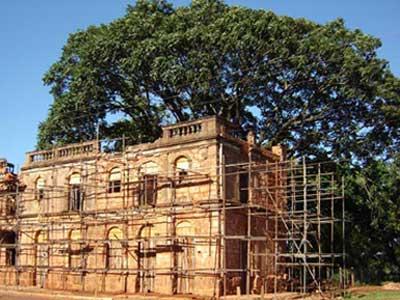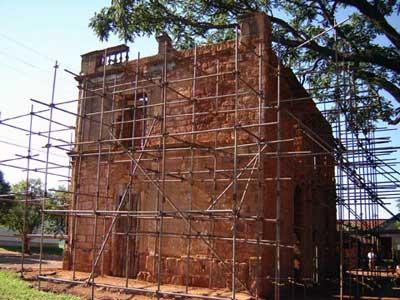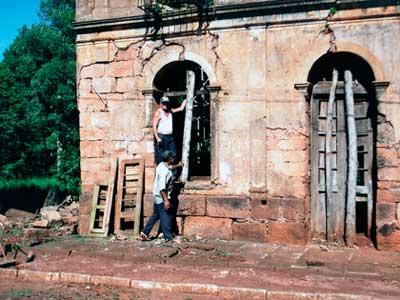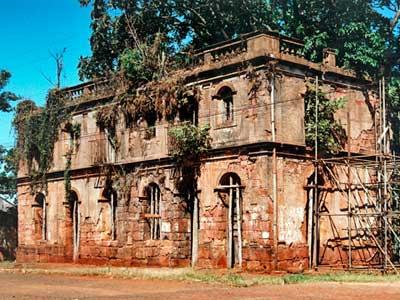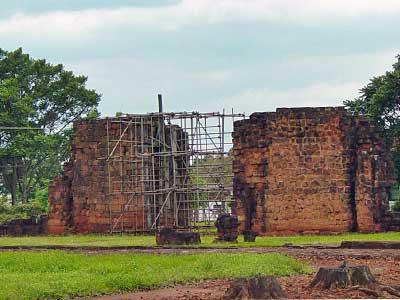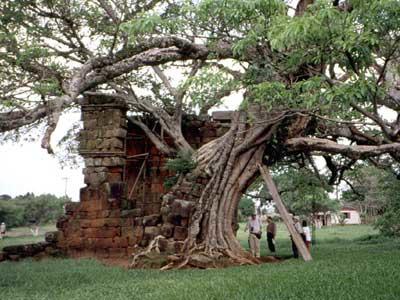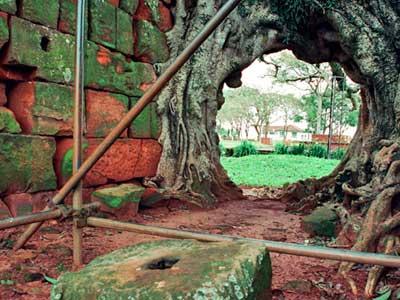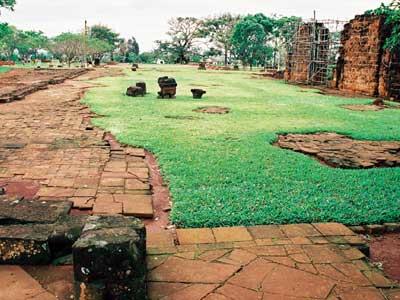São Nicolau
Background
With the aim of converting the native Guaraní population, the Jesuits established 30 missions in the seventeenth and eighteenth centuries in an area of South America that now includes parts of Paraguay, Argentina, and Brazil. One of these missions, São Nicolau, is located in the region of Rio Grande do Sul, Brazil, first colonized in 1626. The mission of São Nicolau was established in 1687, but due to attacks by invaders coming in search of natives to enslave, its population soon left and moved to the western side of the Uruguay River. By 1731 the settlement was repopulated and became recognized as the center for production of baroque-style, polychromatic wood sacred images. São Nicolau thrived as a center for art, architecture and music until 1756 when the Guarani Wars broke out as a reaction to the signing of the Treaty of Madrid, a Spanish-Portuguese border treaty. The complete abandonment of the Brazilian missions started in 1768 when the Jesuit Order was expelled from South America. At the beginning of the twentieth century, a mansion called Casarão Silva was built with stones taken from older buildings in the settlement, but it too was left in ruins later in the century. In 1970, São Nicolau was recognized as an area of National Patrimony because of the remains of the town hall, church, rectory, and other early structures. During the 1980s archaeological excavations were undertaken; however, the materials uncovered were left exposed to the elements and suffered rapid deterioration, putting some structures in danger of total collapse.
How We Helped
Through a grant from American Express, WMF partnered with the Instituto do Patrimonio Historico e Artistico Nacional (IPHAN) to begin preservation efforts at Casarão Silva. Cleaning revealed areas in need of emergency stabilization and brickwork conservation. In addition, a new metal roof was designed and then re-covered with original galvanized tiles to preserve historic aesthetics. In 2003, we developed a training program for conservation, management, and sustainable development for all of the Jesuit Guaraní missions in Argentina, Paraguay, and Brazil that involved local architects in the administration of detailed diagnoses of the sites. Because of the revitalization of the site, the Brazilian Service for Support of the Small and Medium Enterprises installed a tourist information center, interpretation materials, and renewed preexisting artistic and archaeological exhibitions about the Jesuit Guaraní missions.
Why It Matters
While the sociocultural importance of the Jesuit Missions are recognized by UNESCO, the Casarão Silva is also significant, representing the appropriation of archaeological remains at the turn of the twentieth century. The ancient sandstone blocks originally used in the Jesuit mission were taken for reuse in a neoclassical-style mansion that represents a more recent period in the history of the survival of the Jesuit Guaraní missions in South America.

